 Same Day Voter Registration
Same Day Voter Registration
Summary
76,000 new people registered in the final month of the 2018 election.
Most of the new registrations were Unaffiliated, followed by Democrats then Republicans.
Late registrations appear to have cost Republicans the HD27 seat.
There weren’t enough late registrations to make a difference in other competitive races.
The Numbers
Introduction
In 2013 Colorado began allowing same day voter registration. Prior to this an individual had to register a month in advance.
There was a lot of concern about the impact that this might have on our election outcomes. I examined the trend in the following election and found it minimal and uninteresting. As such, I stopped looking into it. However, after getting asked about it again in the 2018 election I took another look and was surprised at just how many people registered in the new window.
Registration by Day
In the month leading up to the 2018 election 75,826 new people registered to vote. That is a big number, much bigger than I’d expected. However, keep in perspective that this represents less than 3% of the votes cast in the 2018 election.
Of the 75,826 late registrants the largest single day for registration was Election Day. 18,264 registered the day of the election.
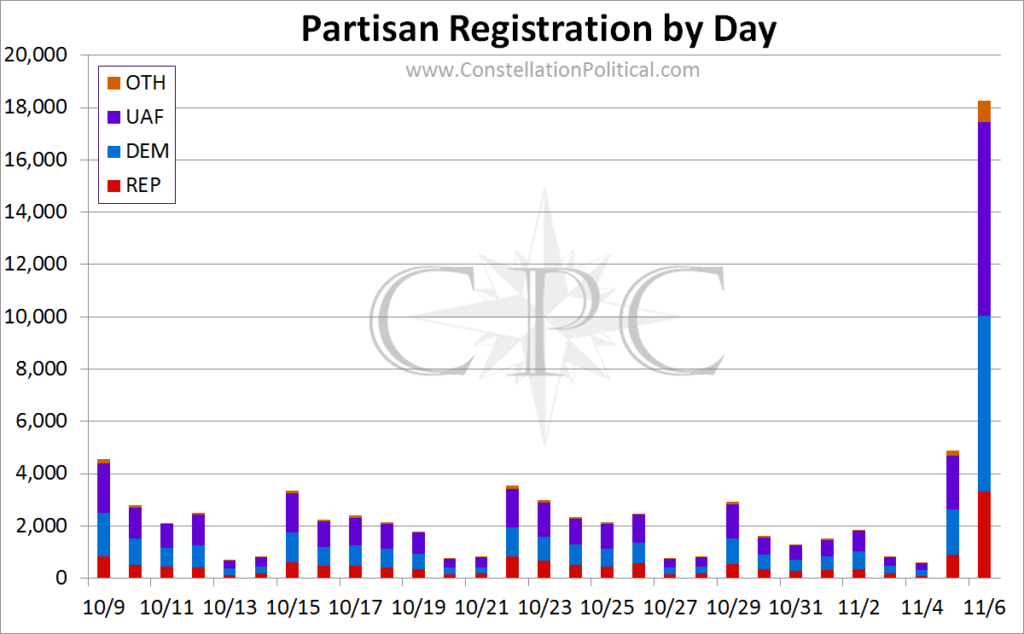
As you can see in Graph 1, the vast majority of the same day voter registrations came from Unaffiliated voters. The second largest group was Democrats, then Republicans, then minor parties. In the month leading up to the election 32,192 new Unaffiliated voters registered, 26,180 Democrats, and 14,857 Republicans registered.
Despite the commanding advantage that Unaffiliated and Democrat voters had in late registration it wasn’t nearly enough to sway the election. Walker Stapleton lost the governor’s race by 268,140 votes. Even if every person who registered in the final month had voted against Stapleton, that wouldn’t account for the full margin of defeat.
Registration by County
So where did all these new voters come from?
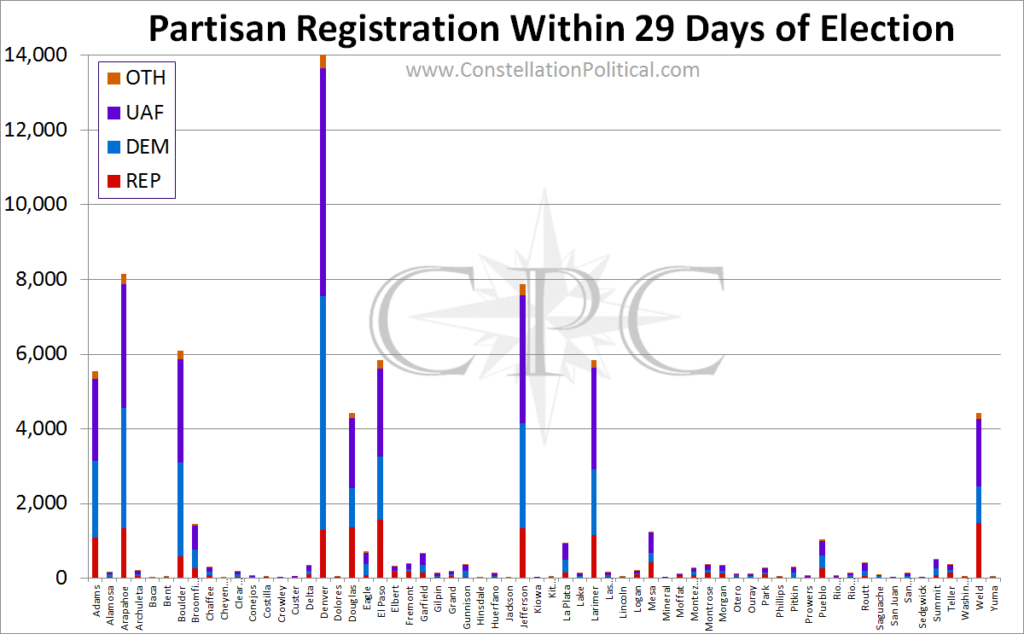
Graph 2 shows the raw number of new registrations in the final month for each county broken out by party. Not surprisingly, most of the new registrations came from Denver. This is to be expected as Denver has the most registered voters to begin with and has a lot of frequent movers. What is surprising, however, is that El Paso County with only slightly fewer total registered voters had so few late registrations.
House District 27
The big question — did this make a difference? For the most part late voter registration was not significant enough to swing the outcome in any of our competitive races. However, there is one exception in HD27.
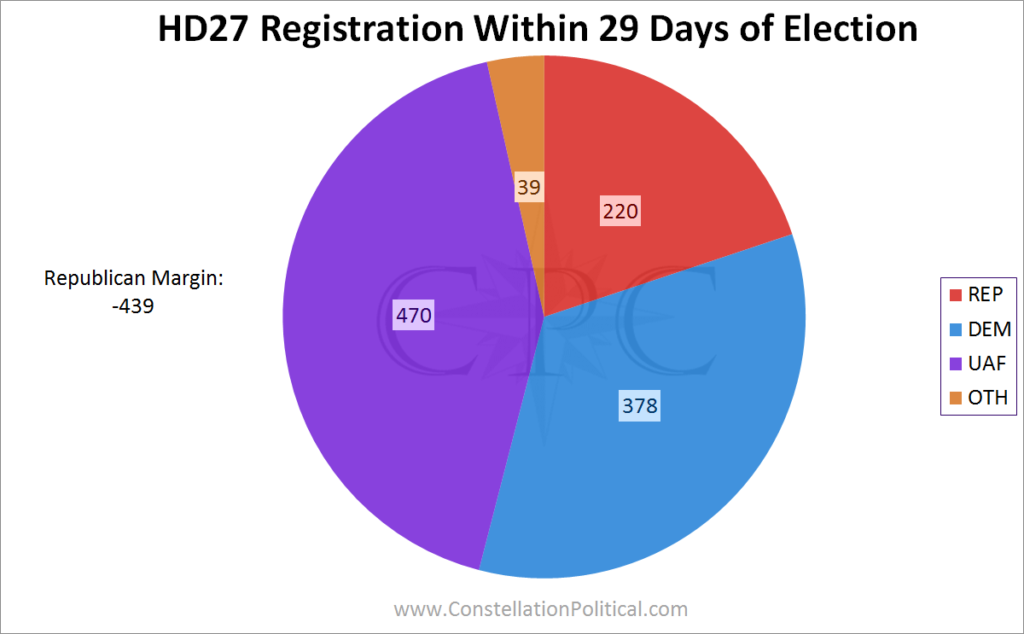
We just barely lost HD27 by 439 votes. In the final month of that race 470 new Unaffiliated voters registered and 378 new Democrats registered. If we assume that all the new Republicans voted Republican, all the new Democrats voted Democrat and that Unaffiliated voters broke in their typical 60-40 against Republicans that accounts for 440 new votes against the Republican. One more vote than the margin of Republican defeat in that district.
Was it Election Fraud?
No, probably not. Just another example of our organizational ineptitude.
There’s a lot of easy red flags that can be checked to look for potential fraud. But, I’ll spare you the statistical discussion and just say that I checked and nothing jumped out at me. If you’re still suspicious you can take a look for yourself, though.
Registration by District
Late registration in the other competitive races wasn’t significant enough to overcome the outcome margins in those races. But, in case you were curious here is how that breaks down.
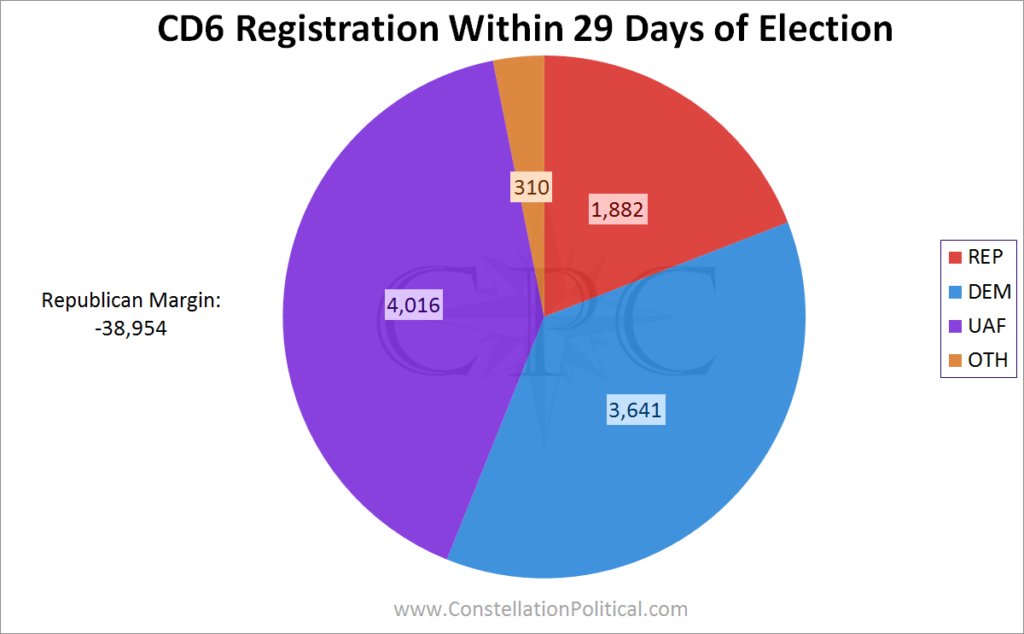
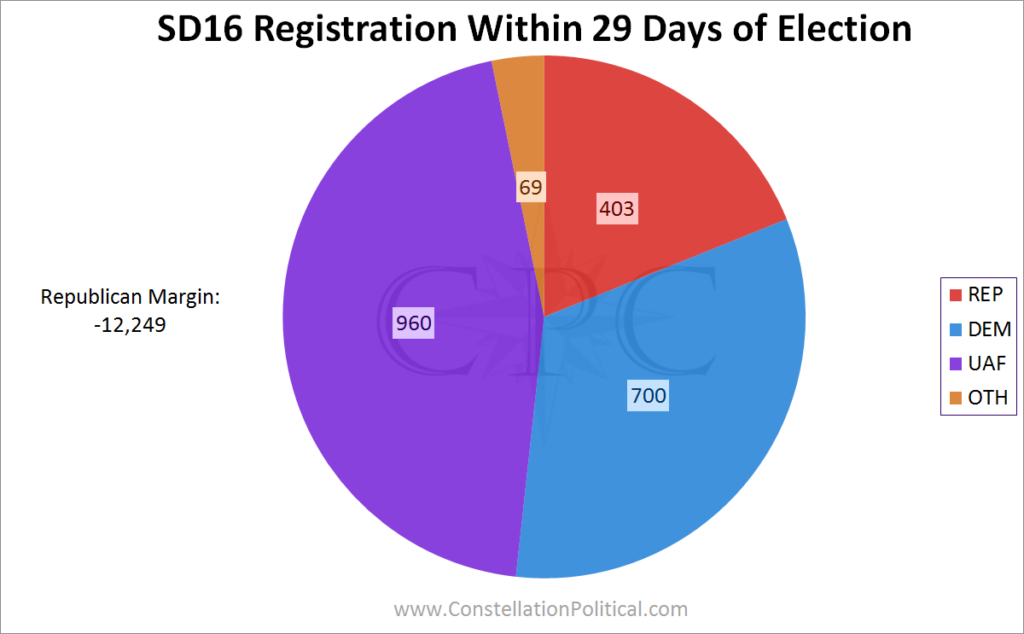
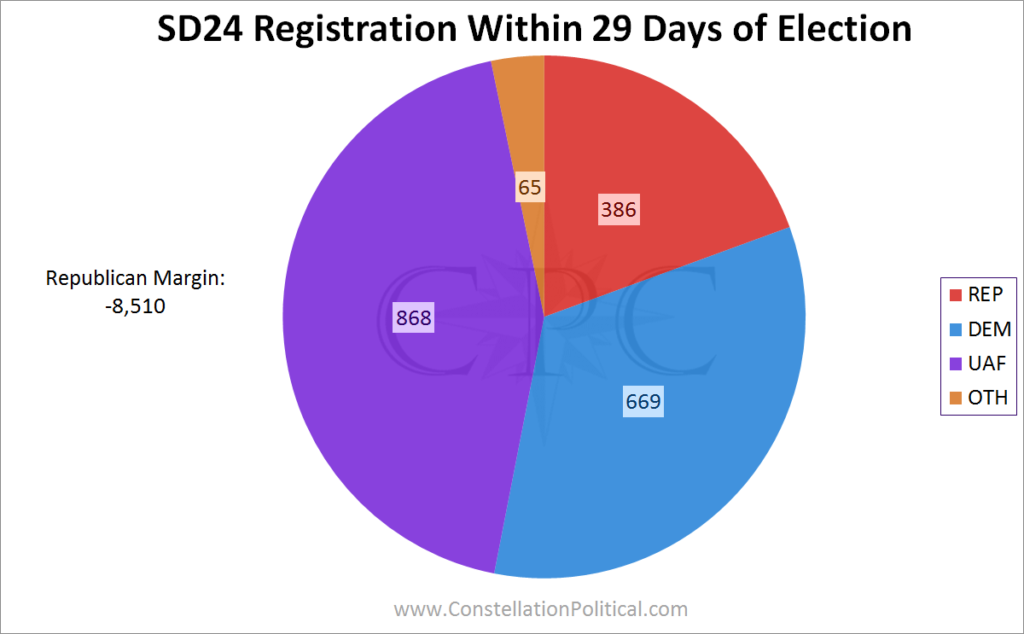
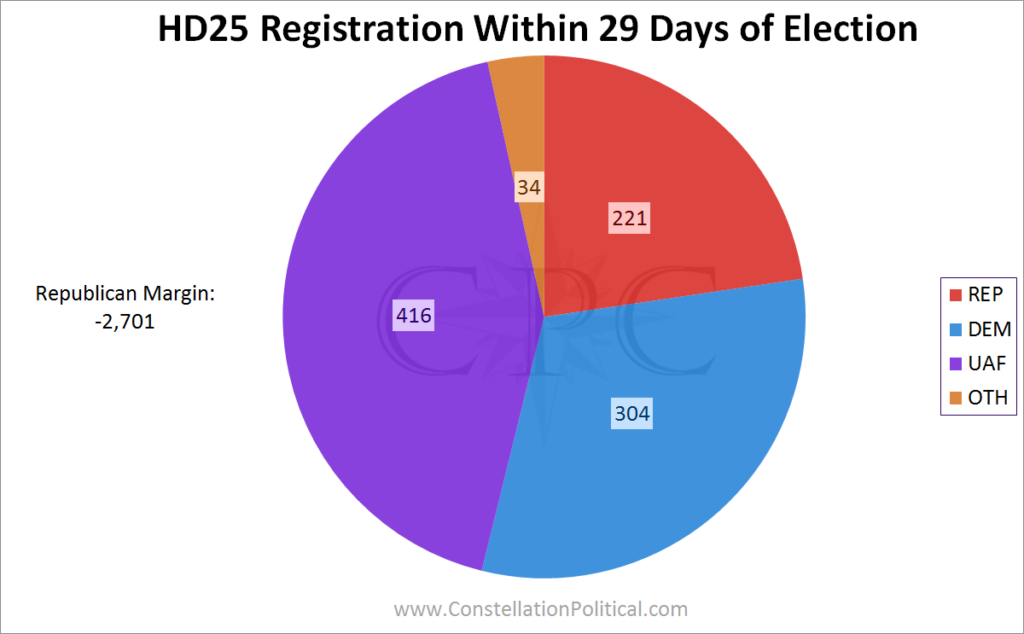
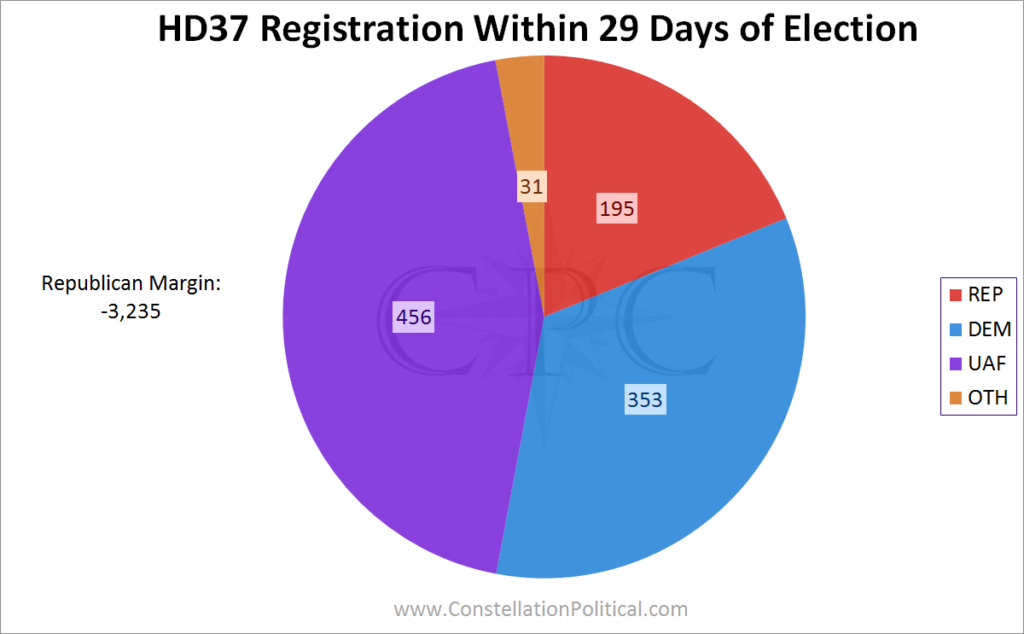
Interesting. Do you have this for HD47?